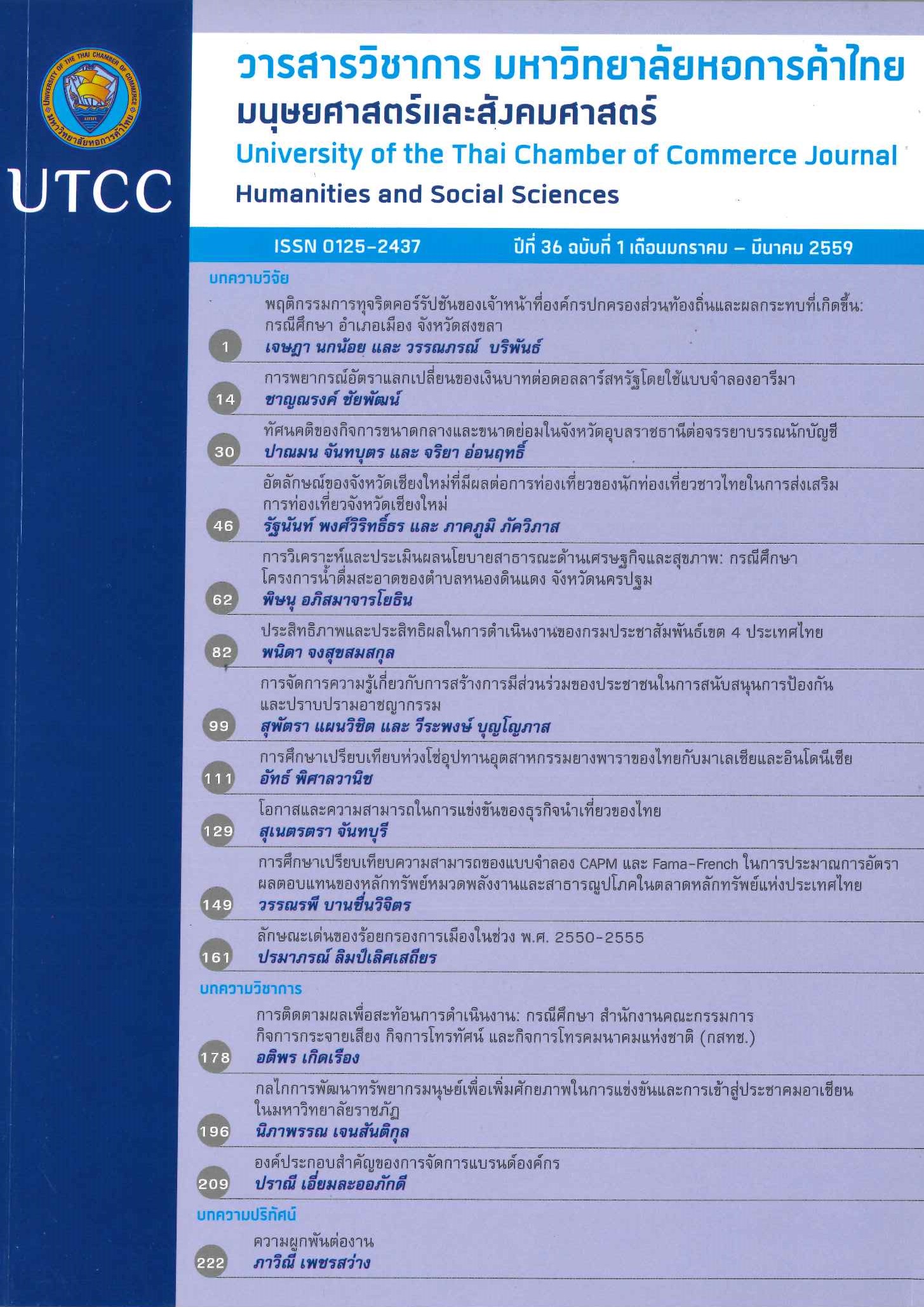Public Health Policy and Economic Analysis and Evaluation: Case Study of Pure Drinking Water in Nongdindang Sub-District, Nakhonpathom Province
Main Article Content
Abstract
This policy analysis research aimed to analyze the three aspects of the health policy and its economics project: project formulation, implementation, and evaluation by means of Stufflebeam’s CIPPI Model. The samples were 372 stakeholders. The evaluations included context, input, process, product, and impact based on document analysis, questionnaires, and interviews. Data were analysed by using frequency, mean, percentage, and standard deviation. The results found that the 1) Context evaluation showed that the project conformed to community needs in terms of economic promotion and unclean drinking water problem solving at a high level. The objectives were selected by the community prior to the project and responded to community needs in terms of economic promotion, unclean and non-standard drinking water problem solving at a high level. 2) Input evaluation showed that the budget allocated for the project was adequate and conformed at a high level. The committees could act as the representative because most of them were the members of the sub-district administration organization; they brought with them experience and community networks. The establishment comformed at the highest level because it was convenient. Furthermore, equipment was avaliable and appropriate at a high level. 3) Process evaluation showed that the project work plan and the production were effective. The project had low cost and gained high value. In addition there were continual conferences. ) Product evaluation showed that it was effective and the drinking water had a clear and pure color. It was unadulterated and had a normal smell and good quality. Product satisfaction was at a high level. The ratio between cost and benefit was 1.00:1.3, which reflected effectiveness. 5) Impact evaluation showed that the community had gained benefits through drinking water provision. In addition, the community could easily buy drinking water at a lower price. This was one of the factors that changed values in water consumption. It could change drinking behavior of unclean and non-standard water such as rain water polluted by toxic fumes from factories and ground water supplies. However, the impact on the environment was at a low level.
Article Details
ลิขสิทธิ์ของบทความ
ผลงานที่ได้รับการตีพิมพ์ถือเป็นลิขสิทธิ์ของมหาวิทยาลัยหอการค้าไทย ห้ามมิให้นำเนื้อหา ทัศนะ หรือข้อคิดเห็นใด ๆ ของผลงานไปทำซ้ำ ดัดแปลง หรือเผยแพร่ ไม่ว่าทั้งหมดหรือบางส่วนโดยไม่ได้รับอนุญาตเป็นลายลักษณ์อักษรจากมหาวิทยาลัยหอการค้าไทยก่อน
References
Chansorn, Woradej. 1984. Policy Implementation. Bangkok: Sahai Block Printing. (in Thai).
วรเดช จันทรศร. 2527. การนำนโยบายไปปกิบัติ. กรุงเทพมหานคร: สหายบล็อกการพิมพ์.
Cobb, Roger, Ross, Jennie-Keith, and Ross,March Howard. 1976. “Agenda Building as a Comparative Political Process.” The American Political Science Review.70, 1: 126-138.
Jansri, Boonpruk. 2006.Project Document and Organization Information. NakhonPathom: Nongdindang Sub-district Administration Office. (in Thai).
บุญปลูก จันทร์ศรี. 2549. เอกสารโครงการและข้อมูลคณะกรรมการบริหาร.นครปฐม: องค์การบริหารส่วนตำบลหนองดินแดง.
Mays, L.W. 1996.Water Resources Handbook. New York: McGraw Hill.
Nimpanich, Jumpol. 2006. Policy Analysis. 3rd ed. Bangkok: STOU Publishing. (in Thai).
จุมพล หนิมพานิช. 2549. การวิเคราะห์นโยบาย.พิมพ์ครั้งที่ 3. กรุงเทพมหานคร: โรงพิมพ์มหาวิทยาลัยสุโขทัยธรรมาธิราช.
Stufflebeam, D., et al. 2007. Systematic Evaluation. Boston: Kluwer-Nij Hoff.
Suteetorn, Bussaba. 2014. “Research and Development of Training Package: Community Reletions Strategy for Community Reletions Officers Working for Government Agencies.”University of the Thai Chamber of Commerce Journal 34, 2: 31-45. (in Thai).
บุษบา สุธีธร.2557. "การวิจัยเพื่อพัฒนาชุดฝึกอบรม"กลยุทธ์การทำงานชุมชนสัมพันธ์" สำกรับผู้ปฏิบัติงานชุมชนสัมพันธ์ในหน่วยงานของรัฐ". วารสารวิชาการ มหาวิทยาลัยหอการค้าไทย 34,2: 31-45.
Thailand Department of Local Administration. 2010.Information of Local Administration. NakhonPathom: Thailand Department of Administration. (in Thai).
กรมการส่งเสริมการปกครองส่วนท้องถิ่น.2553.สารสนเทศองค์การปกครองส่วนท้องถิ่น. นครปฐม: กรมส่งเสริมการปกครอง.


